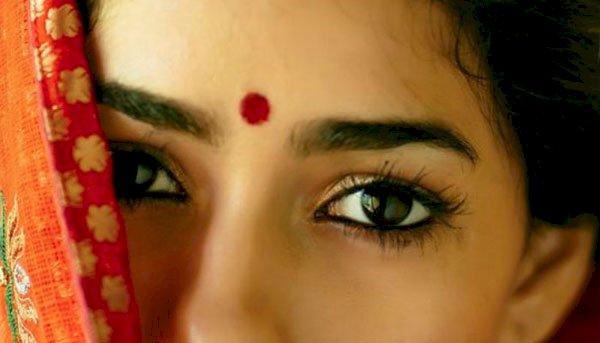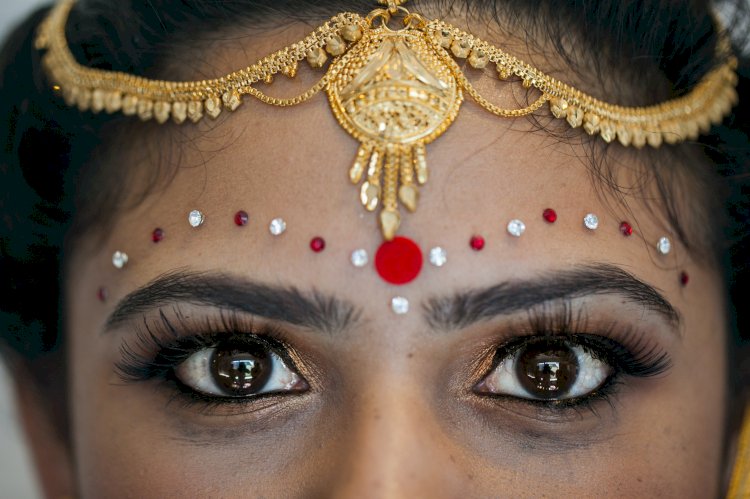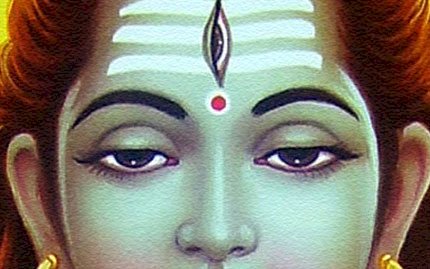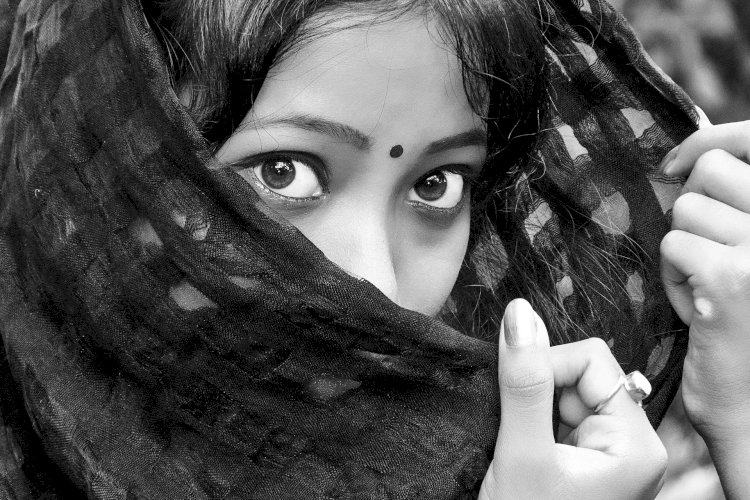Why Bindi is an Integral Part of Hindu Culture and Religion
For many Hindu women, the Bindi is an essential part of their daily attire. But why is this small dot so important? This article explains the spiritual, cultural, and social significance of the Bindi in Hinduism.

The bindi (in the Hindi language which means “dot” or “point”) is a small dot or mark worn on the forehead by women in Hindu culture and religion. It has been a part of Indian tradition for centuries and holds significant cultural and religious value. In Hinduism, the bindi is considered to be a symbol of auspiciousness, prosperity, and good fortune. It is worn not only by women but also by men and children on various occasions.
Despite that the bindi is an integral part of Hindu culture and religion, nowadays; many women (usually foreigners) wear bindis just for decorative purposes without any religious or cultural affiliation. However, the bindi is worn by Indian women as a symbol of their married status (in red color), as well as a mark of respect and devotion to a Hindu deity. The bindi also has a deep religious significance, representing the third eye or the sixth chakra in Hinduism. It is believed to enhance the spiritual and mystical powers of an individual.
If you want to have a deep understanding of why bindi is an integral part of Hindu culture and religion, I invite you to keep reading!
You can also read Exploring the Akashic Records: A Beginner's Guide
Historical Significance of Bindi in Hinduism

As mentioned before, the bindi has a rich and fascinating history in Hindu culture and religion. The practice of wearing a bindi can be traced back to ancient times, and it has evolved and changed over the centuries.
One of the earliest references to the bindi can be found in the Vedas, the sacred texts of Hinduism. In these texts, the bindi was referred to as a symbol of wisdom and knowledge, and it was worn by both men and women.
Over time, the bindi became more closely associated with women, particularly married women. It became a symbol of a woman's marital status and was worn as a mark of respect for her husband.
The bindi also took on religious significance in Hinduism. It became associated with the concept of the third eye, which represents the mystical and spiritual powers of the human mind. The bindi is often placed in the center of the forehead, where the third eye is said to be located.
There are many different types of bindis, each with its own meaning and significance. For example, a red bindi is worn by married women, while an ornate bindi may be worn on special occasions such as weddings or festivals.
Today, the bindi remains an important part of Hindu culture and religion as well. It is worn by women of all ages and backgrounds, and it continues to be a symbol of beauty, tradition, and spirituality, although, nowadays, the bindi is not mandatory for married women as it is the sindoor.
The historical significance of the bindi in Hinduism can be complex and multifaceted. The bindi can have different meanings as a symbol of wisdom, knowledge, spirituality, and marital status, and it serves as a reminder of the rich history and traditions of Hinduism.
Cultural Significance of Bindi in Hinduism

The bindi is not only a religious symbol in Hinduism, but it also has significant cultural importance. It is a mark of beauty, tradition, and identity for women in Hindu society.
In Hindu culture, the bindi is often seen as a mark of femininity and grace. It is considered to be an essential part of a woman's attire, and it is worn daily by many women.
The bindi is also an important symbol of tradition and heritage. It is deeply rooted in Indian culture and has been worn by women for centuries. Many women see the bindi as a way to connect with their cultural roots and honor their ancestors.
In Hindu weddings, the bindi takes on a special significance. It is worn by the bride as a symbol of her new marital status and is often decorated with intricate designs and embellishments.
The bindi also plays a role in defining the social status of women in Hindu society. It is often worn by married women, and it serves as a sign of their respectability and virtue. In this way, the bindi helps to reinforce traditional gender roles and expectations in Hindu society.
Despite its cultural importance, the bindi has also been subject to controversy and criticism. Some argue that the bindi is a symbol of patriarchal oppression and that it reinforces gender stereotypes in Hindu society.
However, many women continue to wear the bindi with pride, seeing it as a symbol of their cultural heritage and identity. For them, the bindi is a mark of beauty, tradition, and spirituality deeply ingrained in their lives.
In conclusion, the bindi holds significant cultural significance in Hinduism. It is a symbol of femininity, tradition, and social status, and it serves as a way for women to connect with their cultural roots and honor their ancestors. While it has been subject to controversy and criticism, the bindi remains an integral part of Hindu culture and identity for many women.
Religious Significance of Bindi in Hinduism

The bindi holds immense religious significance in Hinduism. It is believed to represent the mystical third eye, which is said to be located in the center of the forehead and is associated with spiritual enlightenment and divine wisdom.
In Hindu mythology, Lord Shiva is often depicted with a third eye on his forehead, which he can open to unleash his divine powers. The bindi is said to represent this third eye and is worn as a reminder of the divine powers that exist within all human beings.
The bindi is also associated with the concept of chakras, which are energy centers located throughout the body. The bindi is believed to stimulate the Ajna chakra, located in the forehead and associated with intuition, wisdom, and spiritual insight.
For many Hindu women, wearing a bindi is an important part of their daily religious practice. It serves as a reminder of their connection to the divine and helps to center them in their spiritual practice.
In addition to its spiritual significance, the bindi also serves as a symbol of devotion and worship. Many Hindu women wear a bindi when they visit temples or participate in religious ceremonies as a way to show their respect and devotion to the gods.
Overall, the bindi is a deeply religious symbol in Hinduism that represents the connection between the human and the divine. It serves as a reminder of the spiritual powers that exist within all human beings and helps to center Hindu women in their daily religious practice.
Contemporary Significance of Bindi in Hinduism

In contemporary Hindu society, the bindi continues to hold significant cultural and religious importance. However, its meaning and significance have evolved, reflecting the changing attitudes and values of modern Hindu women.
One of the most significant changes in the significance of the bindi is its growing acceptance as a symbol of empowerment and self-expression. Many young Hindu women today wear the bindi not only as a mark of tradition but also as a symbol of their individuality and creativity. They experiment with different colors, shapes, and designs, using the bindi as a form of self-expression and personal style.
On the other hand, according to the author Pavan Varma, the bindi is a symbol of patriarchy but this is not true because both women and men can wear a bindi. In addition, when using it, each one gives it the meaning they most want, which can be religious or not just please, be respectful, I mean, you should NOT wear a bindi when going to a nightclub for example.
In recent years, the bindi has also gained popularity among non-Hindu communities, who have embraced it as a fashionable accessory. While some have criticized this as cultural appropriation, others see it as a way of promoting cross-cultural understanding and appreciation.
Despite these changes, the bindi remains a significant religious symbol in Hinduism. Many Hindu women continue to wear the bindi as a way of connecting with their spirituality and as a symbol of their devotion to the gods.
In short, the bindi continues to hold immense cultural and religious significance in contemporary Hindu society. As Hindu society continues to evolve and change, the bindi is likely to remain a symbol of Hindu identity and culture for generations to come.
You can also read Exploring Saraswati Puja: Discover the Significance of Vasant Panchami

In conclusion, the bindi is an integral part of Hindus. It holds immense historical, cultural, religious, and contemporary significance, reflecting the diverse meanings and interpretations that have been attached to it over time.
The bindi serves as a symbol of tradition, spirituality, empowerment, and self-expression for many Hindu women, representing the complex intersection of religion, gender, and culture. It has played an important role in shaping Hindu identity and has become a recognizable symbol of Hindu culture and tradition around the world.
While the bindi has faced criticism in some contexts, it remains a powerful and meaningful symbol for many Hindus. Its significance and meaning continue to evolve as Hindu society changes and adapts to new cultural and social realities, reflecting the ongoing relevance and vitality of Hindu culture and religion.
In short, the bindi is much more than a decorative accessory; it is a symbol of Hindu identity, culture, and spirituality that has endured for centuries and will continue to do so for future generations.
If you value these free online resources provided by Natural Life 365, please consider supporting my website by sharing the blogs ![]()
DISCLAIMER:
Some of the links in this content may be affiliate links. This means that if you click on one of the links and make a purchase, I may receive a commission (at no extra charge to you). However, I only recommend products that I personally use and have tested myself. Also, understand that I have taken reasonable steps to ensure that the information on this content is accurate, but I cannot represent that the website(s) mentioned in this post are free from errors. Please, check the Affiliate Disclosure at the bottom of this website.








































